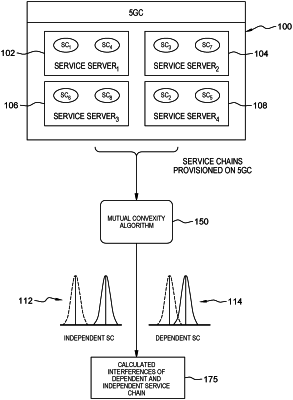| CPC G06F 9/45558 (2013.01) [G06F 1/3203 (2013.01); G06F 9/5077 (2013.01); G06F 17/18 (2013.01); H04L 41/0895 (2022.05); H04L 41/50 (2013.01); G06F 2009/45595 (2013.01)] | 11 Claims |

|
1. A computer-implemented method comprising:
receiving, at one or more hardware processors, event data generated by at least two service chains configured as a series of virtual network functions operable to provide services on computing devices of a virtualized network;
generating, at one or more hardware processors, a joint probability function based on co-occurring event data generated by said at least two service chains;
determining, based on said generated joint probability function, a cross-interference impact of a first service chain upon a second service chain of said provisioned at least two service chains;
quantifying the cross-interference impact by determining a convexity rate for each said first and said second service chain, and determining, based on said convexity rate for each said first and said second service chain, a mutual convexity factor quantifying the cross-interference impact between:
the first service chain dependent on the second service chain; and
the second service chain dependent on the first service chain;
comparing, using said one or more hardware processors, said mutual convexity factor against a pre-determined threshold; and
responsive to said comparing resulting in said mutual convexity factor exceeding said pre-determined threshold, optimizing a use of the virtualized network resources to avoid service failure or service degradation of said at least two service chains, said optimizing a use of the virtualized network resources comprising preventing power consumption in excess of an energy needed to provision said virtualized network functions at said computing devices of the virtualized network.
|